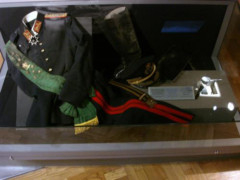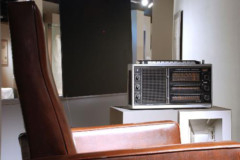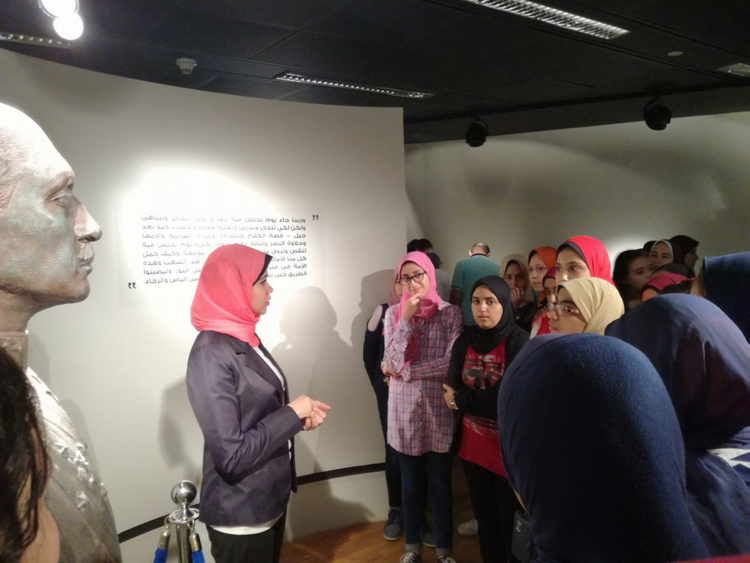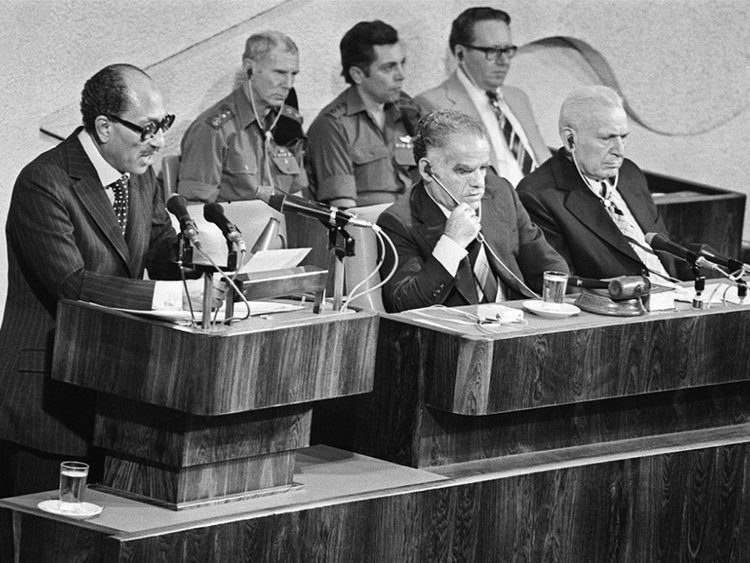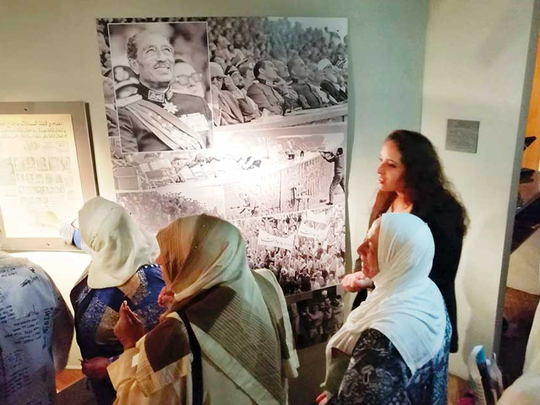
Alexandria, Egypt: Devotees nickname him the “hero of war and peace” due to his 1973 war on Israel and a landmark peace treaty he signed with Tel Aviv six years later.
Detractors of Anwar Al Sadat accuse him of breaking Arab ranks with the 1979 peace treaty with Israel and harming Egypt’s economy by initiating an allegedly ill-considered openness policy.
However, Al Sadat’s admirers and detractors alike flock to a museum housed in Egypt’s prestigious cultural hub, Bibliotheca Alexandrina, where a wealth of information and memorabilia are showcased on the statesman. Al Sadat ruled Egypt for 11 years until his assassination by Islamist militants at a military parade in Cairo on October 6, 1981.
Established on an area of around 250 square metres, the Sadat Museum features around 6,000 items and a large collection of photos tracing the Egyptian leader’s life since his birth in the village of Meet Abu Al Koum in the Delta province of Menufia in 1918 until his death.
An army officer, Al Sadat took Egypt’s helm in 1970, succeeding iconic president Gamal Abdul Nasser. Al Sadat’s reign was marked by radical political and economic changes that have made a drastic impact on Egypt.
Al Sadat switched Egypt’s alliance under Nasser from the former Soviet Union to the US that brokered the Egyptian-Israeli peace treaty. Al Sadat was co-awarded the 1978 Nobel Peace Prize with then Israeli Prime Minister Menachem Begin.
Under Al Sadat, Egypt renounced the centrally controlled economy in favour of the free market economy underpinned by the controversial infitah openness policy.
Thirty-six years after his death, Sadat’s followers believe he did the right thing on both scores.
“This was a man who had a vision that preceded his time,” said Mustafa Shaalan, a 56-year-old engineer. “He went to war when it was necessary and avenged Egypt’s humiliating defeat at the hands of Israel in 1967. And from a position of strength, he sought peace and opened the door for it with his visit to Israel,” added Shaalan, as he looked at a set of photos capturing Al Sadat’s contested trip to Tel Aviv and occupied Jerusalem in 1977.
“Hadn’t he signed the peace treaty, Egypt would not have regained Sinai from Israel and the peninsula would have remained occupied until today like the Syrian Golan [Heights],” he told Gulf News.
Agreeing, Fardus Al Sharif, a government employee in the Mediterranean Sea city of Alexandria, defends Al Sadat’s home legacy. “He introduced the multiparty system in Egypt after years of totalitarianism. He also respected freedom of the press and stopped illegal wiretapping on private phone conversation by centres of powers,” the 58-year-old woman said, referring to a group of pro-Nasser officials whom Al Sadat arrested and put on trial in 1971.
“All these steps paved the way for democracy in Egypt. We should be grateful to Al Sadat for all what he did for Egypt,” added Fardus, who was visiting the museum along with her 19-year-old daughter Shaimaa.
“Mom always talks to me a lot about president Al Sadat. He was a shrewd politician and a leader of the highest class,” she told Gulf News. “I also came to like his personality and struggle after I watched ‘Ayam Al Sadat’,” the high-school student added, referring to a 2001 Egyptian film that dramatises the Egyptian leader’s life.
A frequent visitor to the museum, Shaimaa likes most the personal papers hand-written by Al Sadat and displayed in the museum.
“Also I often stand in front of the glass case showing the military uniform that president Al Sadat was wearing when he was treacherously killed on the Victory Day,” she said.
The blood-stained uniform is among dozens of personal items that Al Sadat’s wife, Jihan, handed over to the museum. An unpublished short story penned by Al Sadat as well as his recorded recitation of Quran are on display too.
The museum is also a destination for tours by students and teachers as well as foreign dignitaries.
While not a fan of Al Sadat, Ashraf Madkur, a schoolteacher, has visited the museum several times since its opening in 2009.
“I like the large numbers of items on display and the admirable use of multi media in this museum,” the 54-year-old teacher said. “The place is a great example of how a historical museum should be,” he added, citing video footage and audio recordings of Al Sadat.
“As for Al Sadat himself, he is now between God’s hands,” said Madkur, who professes his Nasserist leaning. “Only history can judge him for what he did.”


